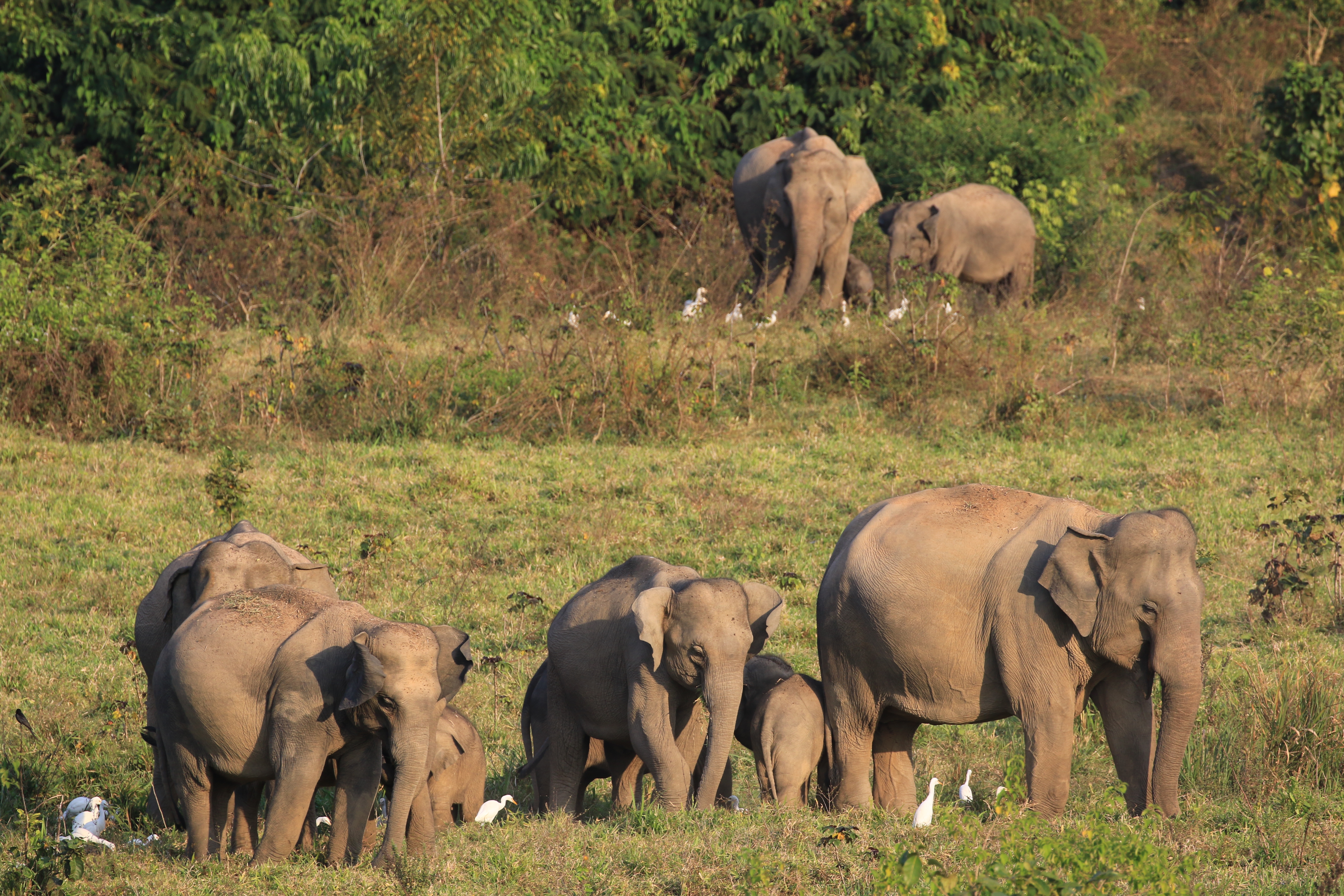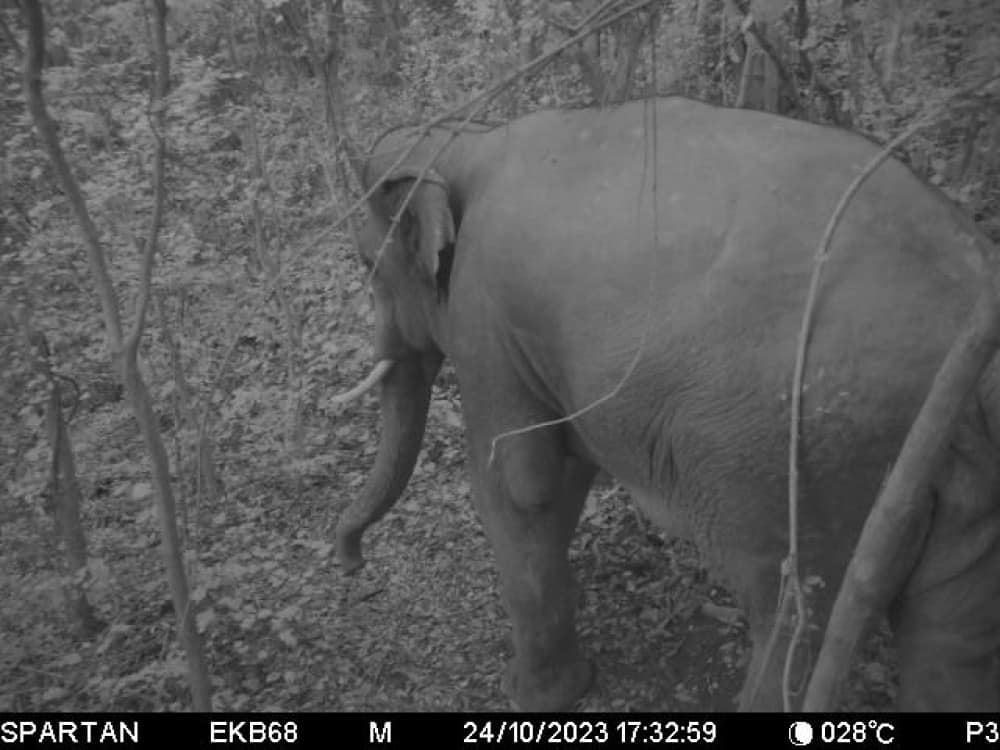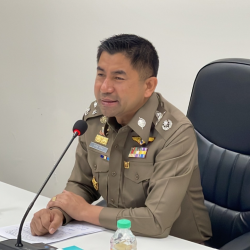Human-elephant relationship is a win-win

It has been many decades since Wanna Kerdzab’s family started using an area of over nearly five hectares, located near the edge of Kui Buri National Park to the east, as a source of food and land for farming. They grow pineapples and other crops, similar to other villagers in the adjacent area, who have encountered the same problem: the invasion of wild elephants.
All affected villagers, including Wanna, developed negative feelings towards the elephants, because they consumed their crops.
Today, though, when asked how she feels towards the elephants, she replies “Now, I feel more affectionate towards them than I did before.”
Despite the ongoing intrusions by elephants, their consumption of crops on her farm and the persistent challenges faced by villagers, what changed Wanna’s attitude towards them is her understanding and acceptance of the coexistence between humans and elephants, along with the realisation of the mutual benefit.
Kui Buri model
The conflict between humans and elephants has existed since the population increased and agricultural areas began to spread closer to protected forest boundaries. Among 69 protected forests across the country, 41 were found to have problems with this kind of conflict and Kui Buri National Park is one of them.
“At the same time, the population of wild elephants is also increasing. Therefore, the problem of elephants coming outside the protected forest area and eating crops in agricultural plots has increased exponentially as well. The guidelines for managing these issues, which we have followed until now, involve pushing them back into the forest whenever they come out. We do this repeatedly,” the head of Kui Buri National Park, Attapong Pao-on, told Thai PBS World.
Since the problem has worsened, various agencies, including both the public and private sectors, such as the Department of National Parks, Wildlife and Plant Conservation, WWF Thailand and the residents of 22 communities around the national park, have collaborated to develop sustainable solutions.
This effort led to the creation of the ‘Kui Buri Model’, which has been highly successful in reducing conflicts between people and elephants. It has also effectively reduced the wild elephants’ consumption of villagers’ crops by more than 80%.

Smart early warning system
In an area covering over 96,000 hectares of Kui Buri National Park, approximately 350 wild Asian elephants reside, according to a 2021 survey. The primary method used to address the issue directly and efficiently involves employing tools and technology to redirect elephants into the forest, before they can consume farmer’s crops.
“Technology supports us, especially in providing warnings about elephant movement – indicating their exit points, the number of elephants and their behaviour. Once we have this information, our aim is to reach and push them back into the forest promptly,” said the head of Kui Buri National Park.
The Kui Buri Smart early warning system was developed in 2020, featuring 30 camera traps installed along the forest’s edge. When these cameras detect elephants leaving the protected forest area, the captured images are automatically forwarded to the Wild Elephant Surveillance Operations Centre.
Alerts are then dispatched to the Rapid Response Teams and farmers through an application and radio communications.

This system ensures timely and early warnings in case of any unusual behavior or signs indicating that elephants are moving towards consuming people’s agricultural products.
Simultaneously, thermal drones are employed to designate targets for patrol officers, divided into five groups patrolling 24 hours a day. Despite the effectiveness of the warning system, however, it is only a temporary solution.
The root of the problem lies in the fact that the elephants’ habitats are becoming uninhabitable, whether due to climate change or insufficient water and food supplies.
In the case of elephants in Kui Buri National Park, even though there is ample food in the forest for survival, some elephants still regularly venture outside the forest to graze.

Reducing attractiveness
Despite the patrols, camera traps and drones, 20% of elephants have managed to escape into people’s farms. Therefore, Kui Buri National Park and WWF Thailand have collaboratively developed scattered plots of grass in the deep forest to serve as their food source.
These plots are continuously improved each year, aiming to increase the appeal for elephants to remain inside the forest.
Meanwhile, efforts have been made to reduce the temptation for elephants to leave their habitat by campaigning for people living along the edge of the forest to decrease the cultivation of pineapples and sugarcane, which are elephants’ favourite foods.
Instead, they are encouraged to plant alternative crops which elephants dislike, such as ingredients used in Tom Yum soup, including galangal, lemongrass and kaffir lime leaves.
The head of Kui Buri National Park emphasised that “Through a comprehensive analysis, considering economic, societal and environmental aspects, we must assess whether it would be profitable for farmers and if their income will remain stable. Questions, such as how to sell the produce and who the buyers would be, need careful consideration.”
Furthermore, he believes that, when the forces of attraction, both increasing and reducing, are balanced, this problem will gradually decrease. Relying solely on the “pushing” method is not a sustainable solution, due to the limited number of available officials. Conversely, the elephant population is expanding, as these animals give birth once a year.
A win-win relationship
Interestingly, another effective tool being used to mitigate human-elephant conflict is the creation of a source of income for villagers, generated from the wildlife resources of Kui Buri National Park.
Wanna Kerdzab has a second job as a tour guide in the Kui Buri wildlife conservation tourism community. Her daily routine is, after completing her morning farming work, from around 2pm to 5pm she guides tourists to observe the wildlife. All community members, who have been affected by elephant invasions, receive annual training. Guides earn approximately 170 baht per trip, while drivers make around 500 baht per trip.

The concept of organizing ecotourism activities arose from the necessity to establish a connection between villagers and elephants, fostering a genuine coexistence. “We then turned the crisis into an opportunity by taking tourists to witness wildlife. The additional income generated is used to compensate for the damage caused to crops by the elephants,” explained the head of Kui Buri National Park.
Wanna admitted that she can accept it if an elephant consumes a pineapple, jackfruit or mango planted on her farm. She said that elephants nowadays are smarter and more proficient at escaping, knowing how to avoid people guarding the farms at night and adeptly sneaking away upon hearing any noises.
This second career not only provides Wanna with additional income but also improves her situation. Moreover, it has changed her perspective on elephants. A mutual reliance in the forests of Kui Buri has, ultimately, led to a win-win relationship between people and elephants.
By Att Boonyatus
Video coverage: http://Fostering the human – elephant relationship






